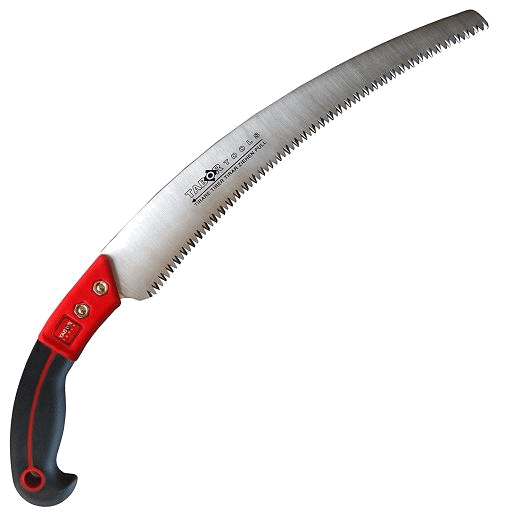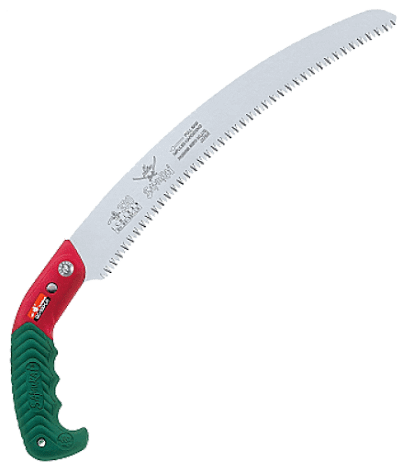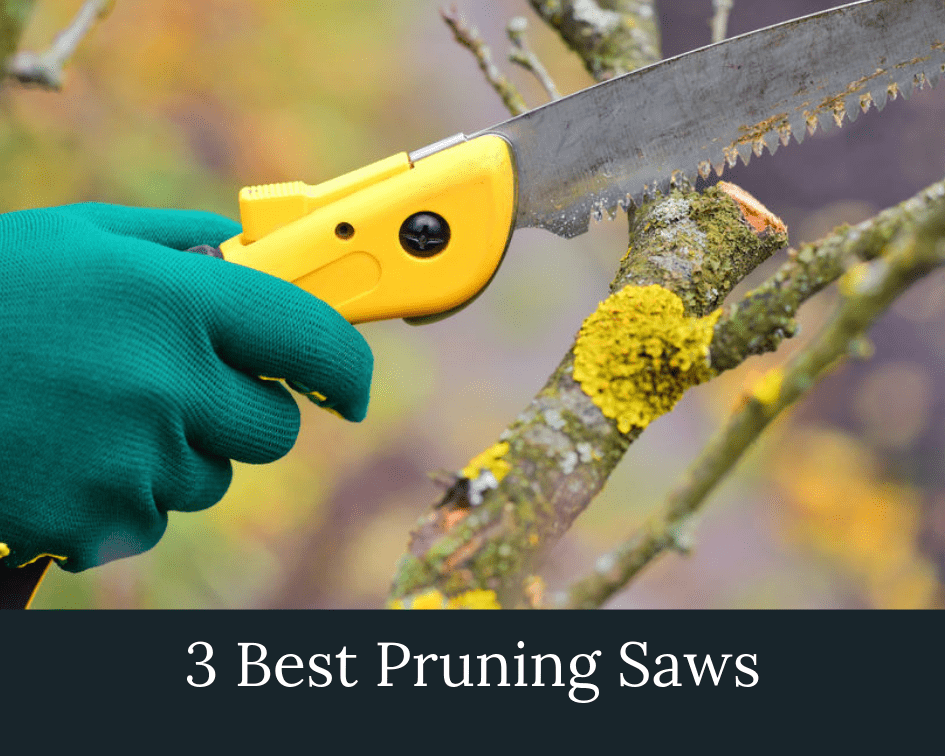This post may contain affiliate links. As an Amazon Associate we earn from qualifying purchases.
Shopping for the best pruning saw? Scroll down to our pruning saw comparison chart. If you’re looking for the best pruning shears, check this out.
Pruning saws do the tough work in the garden, most often, however, they’re the go-to for routine tree pruning. Unlike the saw you use when building stuff, the pruning saw cuts on the pull-stroke and the push stroke, making quick work of a woody branch.
When shopping for a pruning saw you will find three main types
Folding saw
Yes, the folding saw can be handily stored away and fits well in a holster and even in your pocket. It’s ideal for cutting softer, green branches. For continuous use, however, it isn’t the best choice. And, remember, it will require two hands to open it. Plus, the manufacturer is very important because there are many instances of low quality folding saws folding on a user’s hand during the pruning process.
Hand saw
The hand saw is the workhorse of the garden and you’ll find yourself returning to it over and over. They are durable and remain sharp for a long time. Storage isn’t as easy as it is for the folding saw, but this guy cuts those larger, woodier branches.
Pole saw
Although the pole saw can be a hassle to use, it’s a blessing if you need to trim those way-up-high branches. We’ll be reviewing these in the near future.
Then, you’ll need to select a blade type. Longer blades “give additional reach, have larger cutting capacity and are less likely to pull out of a cut,” according to the pros at Gempler’s.
Because of this, cuts are smoother. Saws with shorter blades, on the other hand, “offer better control.”
While shopping for pruning saws you’ll also notice they come with either straight or curved blades. We use the curved bladed saws. The leverage provided offers easier cuts than saws with straight blades. The latter, however, are good for smaller pruning jobs, such as small fruit trees.
Finally, decide if you want large teeth or small. This will depend on what you typically prune with the pruning saw. If it’s hardwood, choose a fine-tooth saw (11 teeth per inch).
For softer wood, step down to 8.5 teeth per inch. For hard, quick pruning, extra-large-toothed saws (5.5 or 6 teeth per inch) will get the job done quickly. The 6-tooth per inch saw is best for general pruning.
Since 13 inches is about right for most home pruning jobs, we searched for the best curved hand saws in this price range. These are not folding saws – that review is coming in a couple of weeks.
TABOR TOOLS 13-inch Pruning Saw |
Samurai Ichiban |
Silky Zubat | |
|---|---|---|---|
 |
 |
 |
|
| Rating |  |
 |
 |
| Length | 13" | 13" | 13" |
| Weight | 8.8 oz. | 1.1 lb. | 10.4 oz. |
| Blade | Curved, 3-angled teeth | Curved, 6.35 teeth per inch, impulse hardened, chrome plated | Curved, 8.5 teeth per inch, hard-chrome plated, rust resistant |
| Max branch thickness | 4 inches | 4 inches | 4 inches |
| Scabbard included |  |
 |
 |
| Replacement blade available |  |
 |
 |
| Pros/Cons | No customer complaints, yet that it doesn't come with a scabbard and no replacement blades available causes it to lose one star | Excellent grip; blade holds its edge after repeated use. Complaints that the scabbard clip and the saw’s screws come loose. | Pruning saw of choice for many professional arborists. No complaints from them. Lots of knock-offs sold on Amazon; use caution when shopping. |



